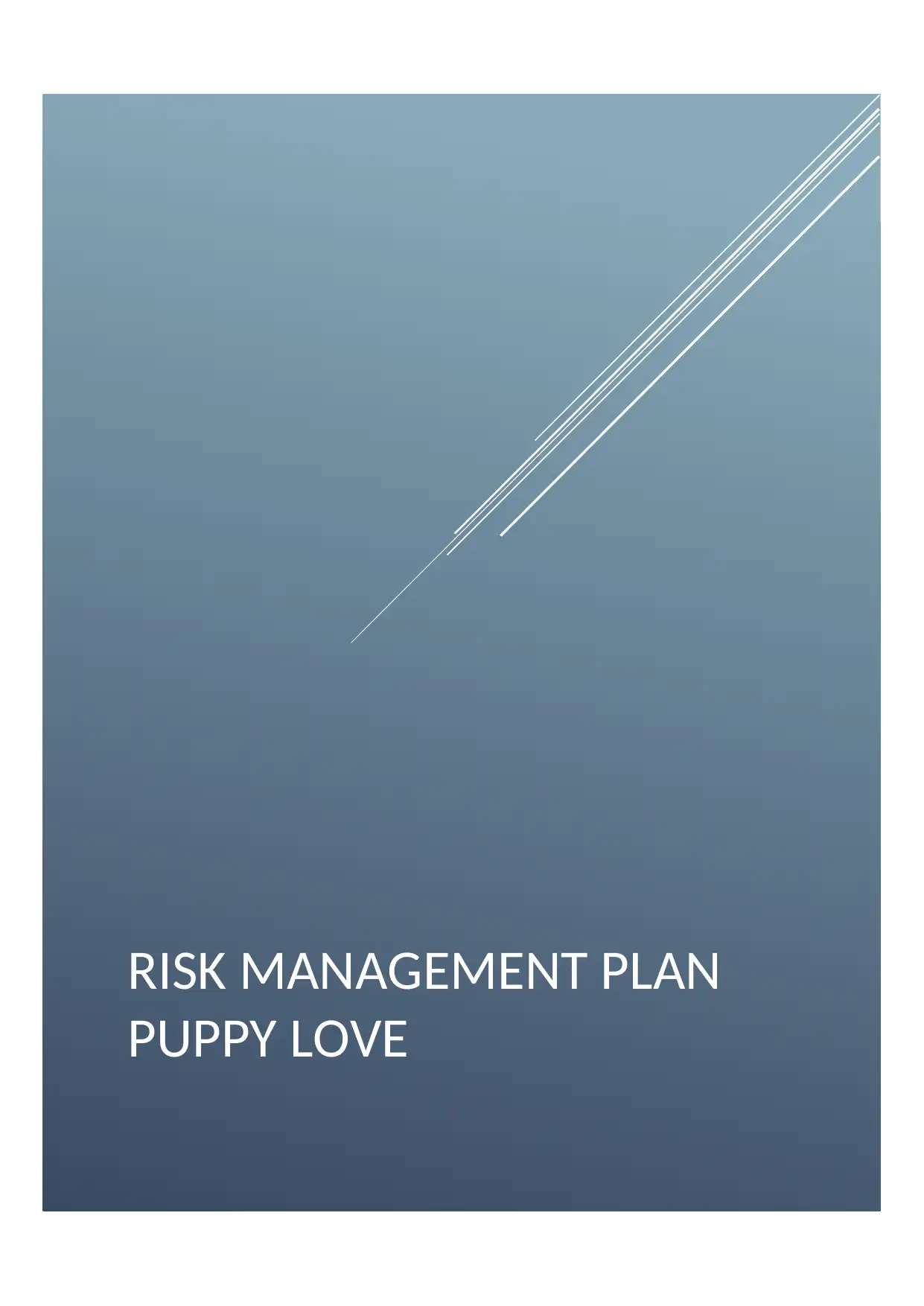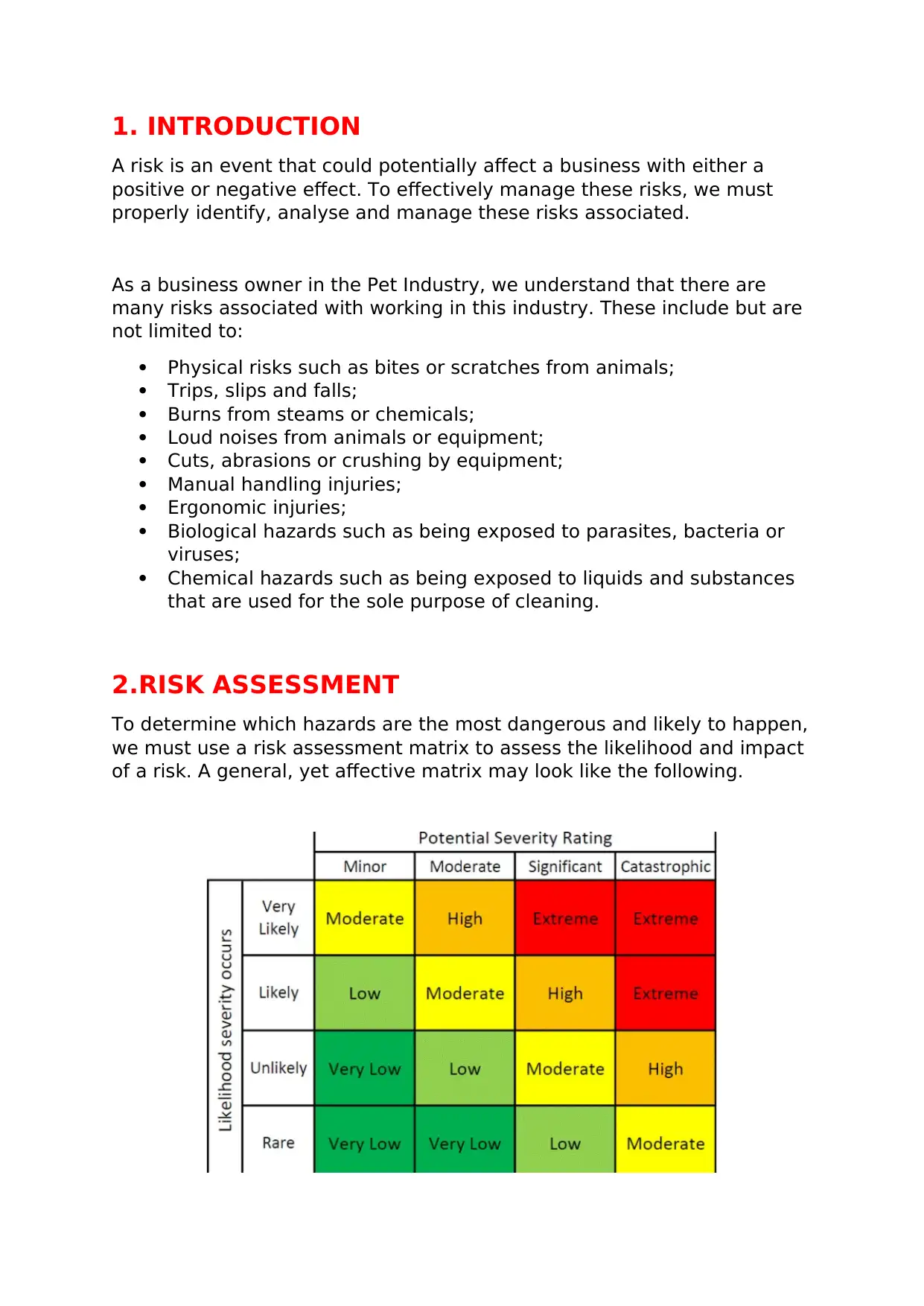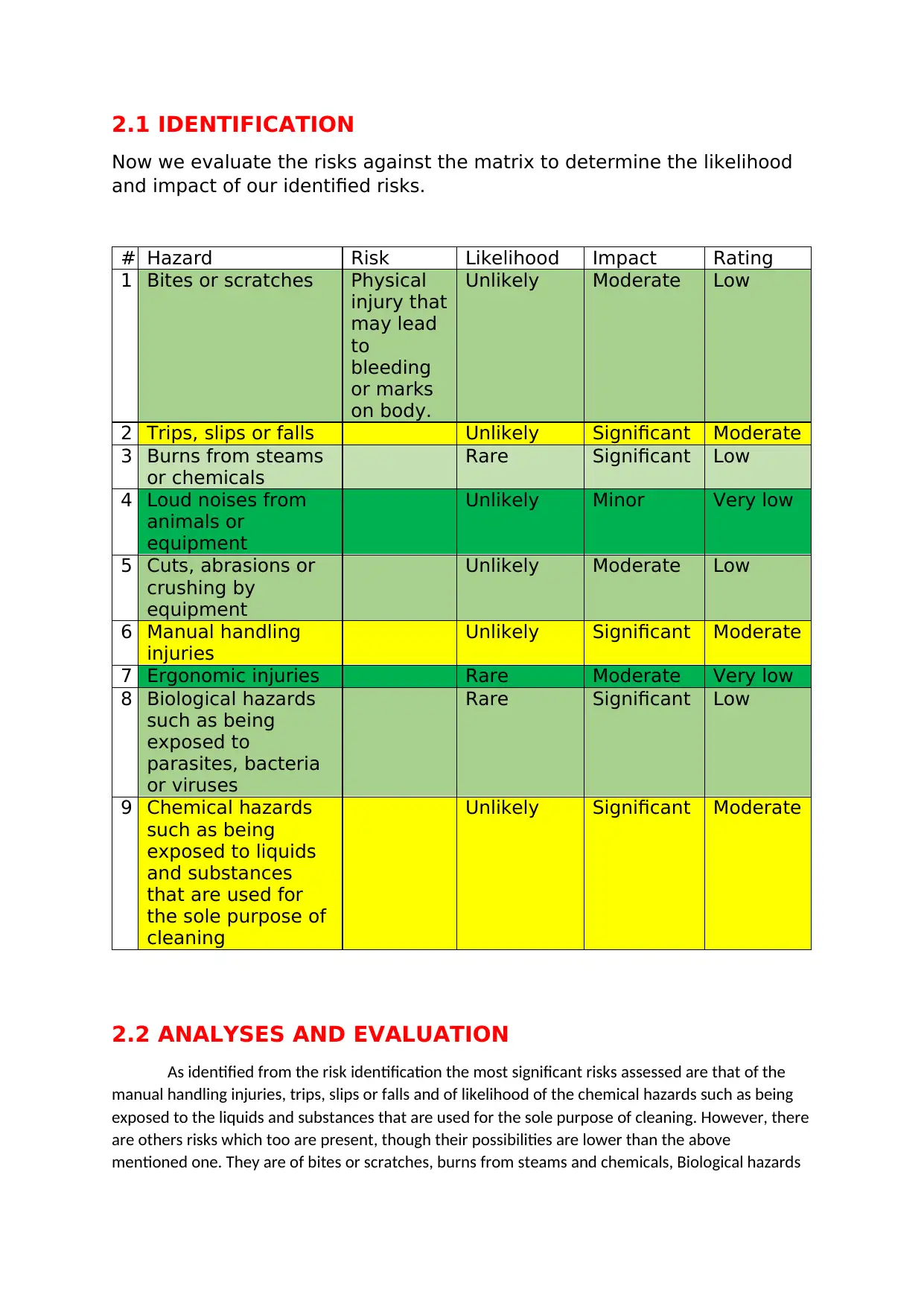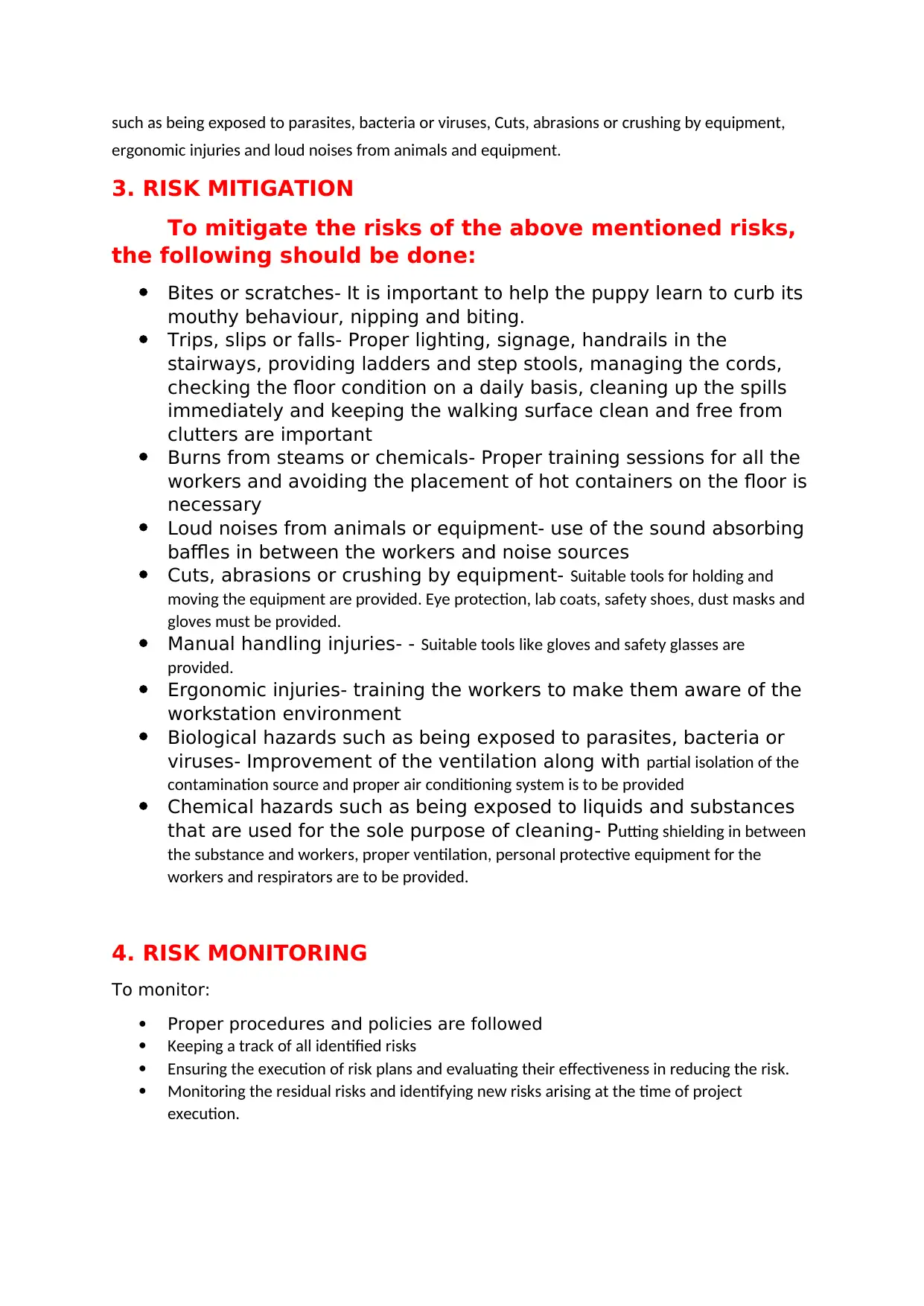Comprehensive Risk Management Plan for Puppy Love Business
VerifiedAdded on 2023/06/11
|4
|803
|364
Report
AI Summary
This document provides a comprehensive risk management plan tailored for a pet business named 'Puppy Love.' It begins by introducing the concept of risk management and its importance, specifically within the pet industry, identifying various potential hazards such as physical injuries, slips, burns, noise, equipment-related incidents, manual handling issues, ergonomic problems, biological hazards, and chemical exposures. The plan then details a risk assessment process, utilizing a matrix to evaluate the likelihood and impact of each identified risk. Key risks highlighted include manual handling injuries, slips and falls, and chemical hazards. Following the assessment, the document outlines specific mitigation strategies for each risk, such as implementing safety protocols, providing training, using protective equipment, and improving workplace ergonomics. Finally, the plan emphasizes the importance of ongoing risk monitoring through regular procedure checks, risk tracking, plan evaluation, and identification of new or residual risks. This detailed approach aims to ensure a safe and secure working environment within the 'Puppy Love' pet business.
1 out of 4





![[object Object]](/_next/static/media/star-bottom.7253800d.svg)